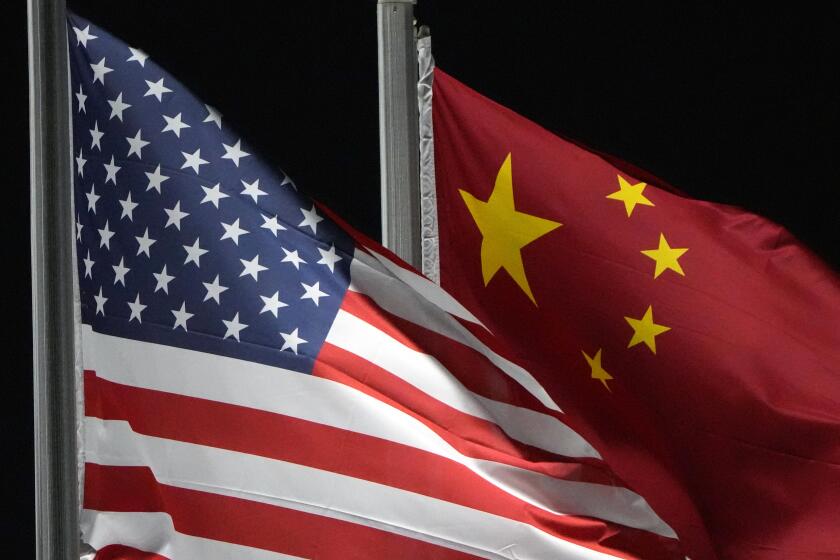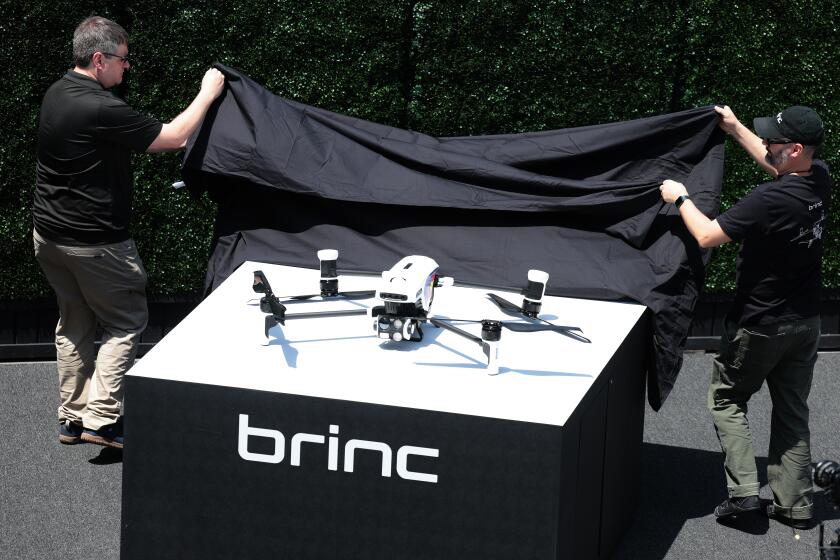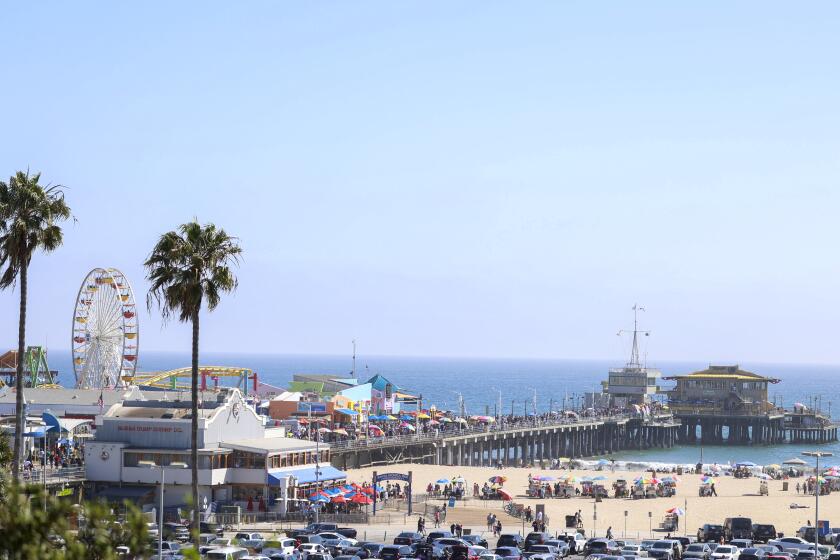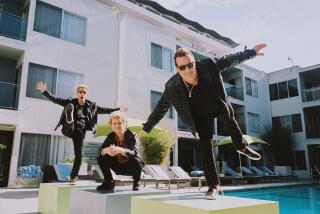Chinese citizen allegedly photographed Vandenberg base with drone, says it was ‘probably not a good idea’
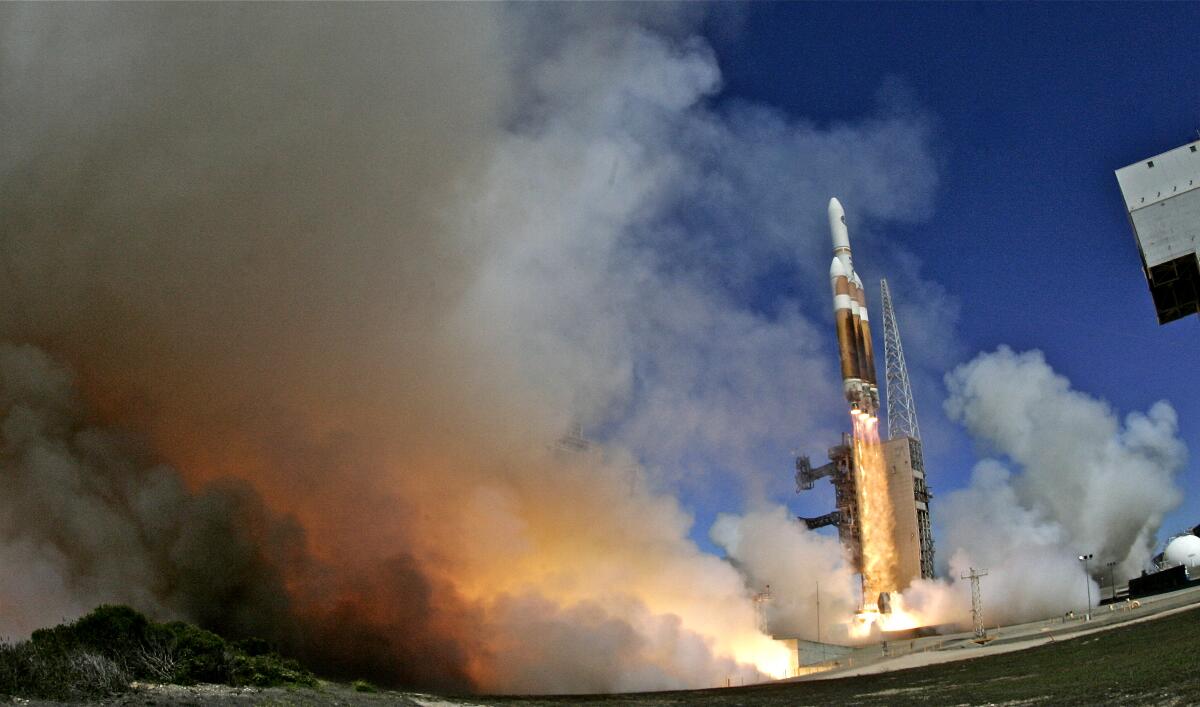
- Share via
- The drone that flew over the military base weighs around 2 pounds and flew nearly a mile off the ground.
- Federal agents say Yinpiao Zhou, a Chinese citizen who lived in the Bay Area on a immigrant visa, planned to fly back to China in early December.
- The drone was hacked with software that allowed it to enter no-fly zones.
Nearly a mile above Vandenberg Space Force Base in Santa Barbara County, a hacked drone soared through restricted airspace for roughly an hour.
The lightweight drone photographed sensitive areas of the military facility on Nov. 30, including a complex used by SpaceX, according to federal investigators.
The drone then descended back to the ground, where the pilot and another man waited at a nearby park.
Four security officers from the military base arrived on the scene and asked the men if they had seen a drone flying through the area, unaware that one of them had tucked the drone under his jacket.
Authorities identified that man as 39-year-old Yinpiao Zhou, a Chinese citizen and a lawful permanent resident of the U.S. He was charged with failing to register the drone and flying it over restricted airspace to take photographs of the military base, the U.S. attorney’s office announced Wednesday.
The suspect is alleged to have used an unlicensed drone to deliver fentanyl and other narcotics from his home. At least one person died of an overdose, according to a grand jury indictment unsealed Wednesday.
On Nov. 30, personnel at the military base detected the drone and determined that it had taken off from nearby Ocean Park to the north. The drone traveled south near Surf Beach and then directly toward Space Launch Complex Three and Four, according to court records.
The drone flight came several hours after the base had hosted the launch of a SpaceX rocket carrying a spy satellite for the federal government.
When security personnel arrived at the park that day, Zhou told them he saw a drone, but did not see the pilot, according to court records. He said this while his hands were in his pockets; when he took them out of his jacket at the security personnel’s request, he exposed the drone, federal investigators said.
When asked why he lied, Zhou said he was afraid that the security personnel were with the military, according to court records.
Russia’s Garpiya series long-range attack drone has been used to destroy critical infrastructure and resulted in mass casualties in Ukraine.
The security personnel then asked to see the footage captured on his drone. When they saw that it included portions of the military base, they asked him to delete it, which he did, according to court records.
Court records suggest that Zhou was aware that flying into the base’s air space was forbidden. A month earlier, Zhou allegedly searched “Vandenberg Space Force Base Drone Rules” on his phone, then told another person in a message that he could hack his drone to reach higher than it could otherwise fly, according to an affidavit filed on Sunday in the Central District of California.
The affadavit alleges that Zhou admitted to federal agents that he purchased software online that allowed his drone to reach higher elevations and enter no-fly-zones. He also did not register his drone with the Federal Aviation Administration and did not have a license to operate the device, according to federal prosecutors. He also admitted that he got in trouble once for flying his drone in a no-fly zone in Shanghai.
Zhou and the man he was with, who was not named in court papers, had stayed overnight at a campground in the Big Sur area of Monterey County on Nov. 28. The two arrived at Ocean Park the following day and learned about the SpaceX launch at the military base on Nov. 30. Zhou admitted he recorded the launch with a handheld camera.
Several Southern California law enforcement agencies use drones in a variety of scenarios including hostage situations, missing persons and 911 response.
Zhou, who lives in Brentwood in Contra Costa County, entered the U.S. on an immigrant visa on Feb. 12 and planned to return to China around Dec. 9, along with the other man who was with him at the park, the Justice Department said. That person arrived in the U.S. on Nov. 26 on a visitor visa, according to federal investigators.
In October, Zhou sent images he took with his drone of a city and mountains to someone through the WeChat messaging app, federal prosecutors alleged. He emphasized the elevation of the images, with one image reportedly taken at 1,800 feet and another at 8,000 feet.
“Oh wow that damn thing flys high,” the other person wrote back to Zhou.
“I hacked my drone. It’s not supposed to go that high lol,” Zhou wrote back, according to federal prosecutors.
Zhou later admitted to federal agents that photographing the SpaceX facility at the military base was “probably not a good idea,” court records show.
On July 6, a Santa Monica police officer was directing the department’s drone back to the station from a radio call when the officer decided to survey the Fourth of July weekend crowd near the pier and the nearby parking lots.
Authorities say that Zhou flew his drone outside of visual line of sight, which would require him to register the drone with the FAA. Data gathered from the drone show that it flew approximately 1.8 miles from Ocean Park and then nearly a mile up at its maximum height.
Zhou was arrested Monday at San Francisco International Airport before he was able to board a flight to China, and he appeared in a San Francisco courtroom on Tuesday. He did not enter a plea and is expected to be arraigned in Los Angeles in the coming weeks, according to the U.S. attorney’s office.
More to Read
Sign up for Essential California
The most important California stories and recommendations in your inbox every morning.
You may occasionally receive promotional content from the Los Angeles Times.
